Hosmer Mines Ltd., Hosmer BC
For this adventure we explore the surface plant ruins of the Hosmer Mines Ltd. operation in (where else) Hosmer BC. While the mine only operated for a half dozen years, a lot remains of it, including several substantial concrete buildings and a long row of coke ovens. Clearly everything here was made to last.
Located south of the CPR line, most of the remains are hidden in the bush, but not terribly hard to find. There is a grouping of two structures, what I am told are the powerhouse and compressor building and further east, a few hundred metres away is another building, it’s exact purpose unknown. Another few hundred metres away are the coke ovens. It’s a very interesting place!
For this report, we’ll concentrate on these surface buildings only. We hope to do future reports, documenting the cemetery and mine portal area and perhaps the town site itself.
While one can drive up to the first buildings, we elected to walk in, It’s only few hundred meters after all. Following the road, one instantly knows they are in a coal mining area and there is evidence of coal slack all around.
Before long, we come across our first artifact, remains of a bucket conveyor or elevator. Right behind is the first building, what I am told was the powerhouse. This is the largest structure we’d explore this day. It’s of substantial construction, as are all of the structures we’d see and based upon that they must have believed that the mine would last forever – there is after all A LOT of coal in the mountain above us. A tunnel under the concrete slab floor runs the entire length of the building.
Right next door is a second building, which I understand housed the compressors. There are large pedestals inside, which presumably were the supports for those machines, which must have been massive. These compressors would have supplied air to the various machines operating in the mine.
Heading back to the car, we head east where we find a third building along with a bare foundation. In spite of being several stories tall, the former is hidden by tall trees and would be easy to miss. It’s not clear what purpose this building had, but perhaps it was associated with the tipple, which I understand was located very near here. What appears to be an old rail bed runs behind the structure. The foundation mentioned is right beside the road.
All these buildings once housed machinery and the like, and on closing much or all of it was removed. I understand that some was sold to others mines in the region.
Driving east again, it’s not long before we are at the coke ovens. They are on the north side of the road and easily seen. At least some of it is easily seen – other parts are heavily overgrown and could be easily mistaken for an earthen berm. An old road runs on the back side of them, allowing you to easily explore them.
There are or were 240 ovens here and they stretch for what must be a hundred metres or more. I should have, but did not, count the number I passed, so I have no way of knowing if that number still exist or if some have been destroyed. These domed roofed chambers are what’s known as beehive ovens, for obvious reasons.
To make coke by this method was a fairly simple but laborious process. A charge of coal was loaded through the top hole into the sealed oven, where it was superheated in an oxygen poor environment, which drove off gasses and impurities. Once the process was completed the product was shovelled out of the oven and cooled off with a spray of water. It was then shipped off to customers via the railway.
The resultant product, a porous lightweight mass, which could take several days to make, would burn much hotter than coal. This made it useful for industries like smelters where high temperatures were needed to melt metal ores.
It appears that in the past people have salvaged bricks from these structures. Hopefully that has stopped.
The mine was operated by Hosmer Mines, through Canadian Pacific Railway subsidiary, Pacific Coal Company. It took a few years to develop with the mine with production starting in 1908. Most of the output was destined for another CPR property, the huge Consolidated Mining and Smelting operation in Trail BC. The world’s largest lead/zinc smelter, it had an insatiable appetite for the mine’s output.
The actual mining took place on the flanks the mountain behind and above the buildings we explored. Coal would be hauled to the surface there and via a tramway it would be brought down to the processing plant. There it would be cleaned, sorted and loaded onto rail cars. Some would be set aside and made into coke.
The mine remained in production until 1914 when it was closed. Reason’s given was that the coal was of spotty quality and that it was often difficult (meaning expensive) and dangerous to extract – for example the seams were badly dipped which presented many challenges to the miners. With the closing of the mine, others in the region (Fernie, Natal/Michel and the Crowsnest Pass) took up the “slack”.
The founding of Hosmer dates from around the time the mine was established (1906-1908) and the former’s prosperity depended on the success of its main employer. With with the closing of the mine, the town quickly dwindled. Hosmer did not die however and today it’s home to perhaps a couple dozen houses. At the peak, over thirteen hundred people lived here and around half them worked at the mine.
There is still coal mining in the area (Sparwood and Elkford), but instead of underground operations, they are all large pit mines. According to the BC government, there is still a lot of coal in the old Hosmer Mine, but who knows if will ever be extracted.
The sites we visited have been hit with some vandalism, which I guess is to be expected. Given the building’s robust construction however, painting is about all they can do. There has been talk of making them a protected historical site. That’s a good plan, which hopefully will assure the remains get preserved.
To see some other coal mine remains we’ve explored, click any of the links below…
Crowsnest River walk and Hillcrest-Mohawk Collieries plant.
In search of Mitford Alberta – part 3 Bow River Coal.
Tent Mountain was torn a new one.
If you’d like to know more about what you’ve seen here, by all means contact us!
Date: September, 2013.
Location: Hosmer, BC.
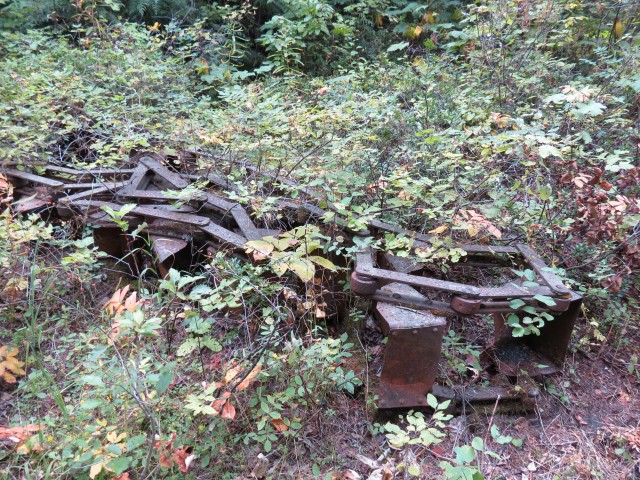
Our first find, remains of a bucket conveyor.
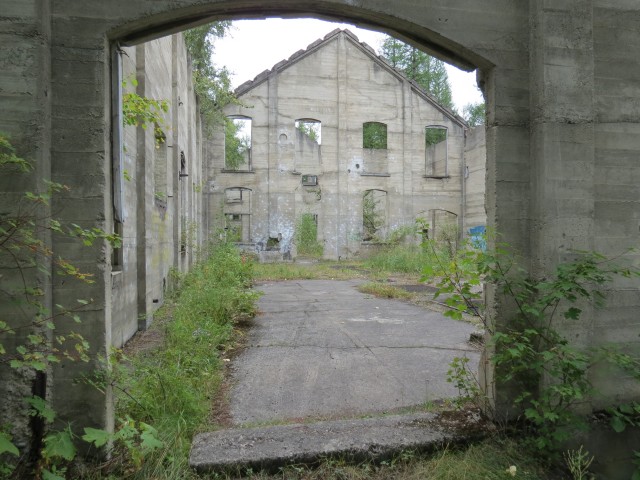
Entering the first building.
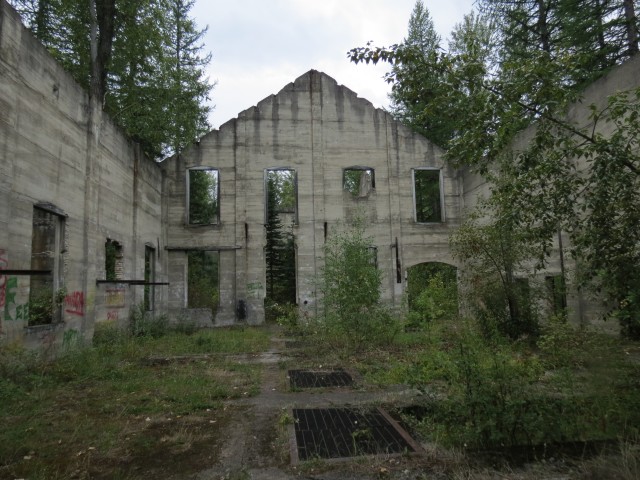
I’ve been told that this structure is likely the power house.
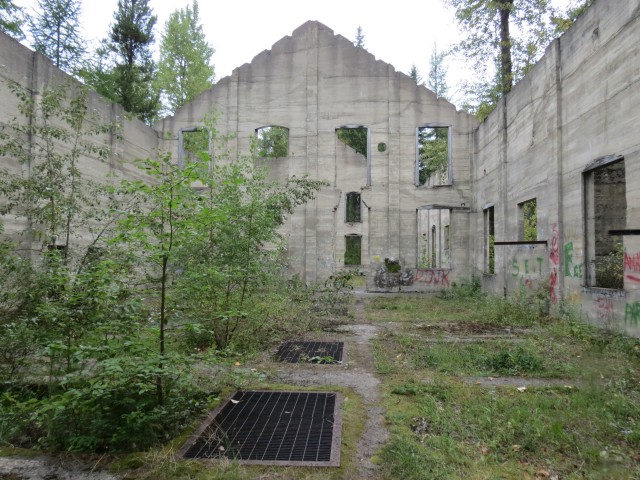
Under the grates is a tunnel that runs the length of the building.
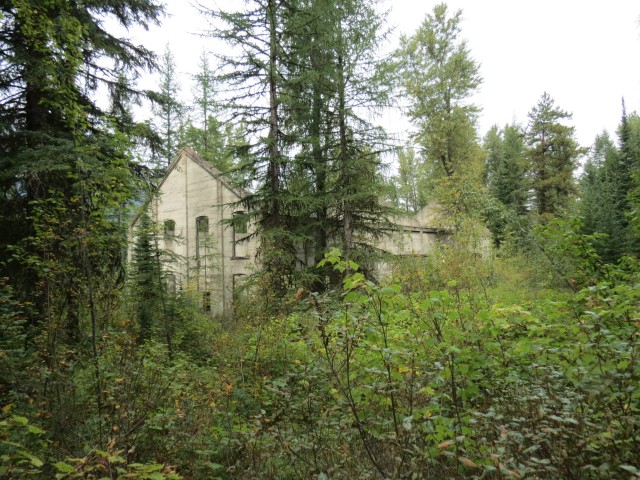
This second building nearby, supposedly housed the air compressors.
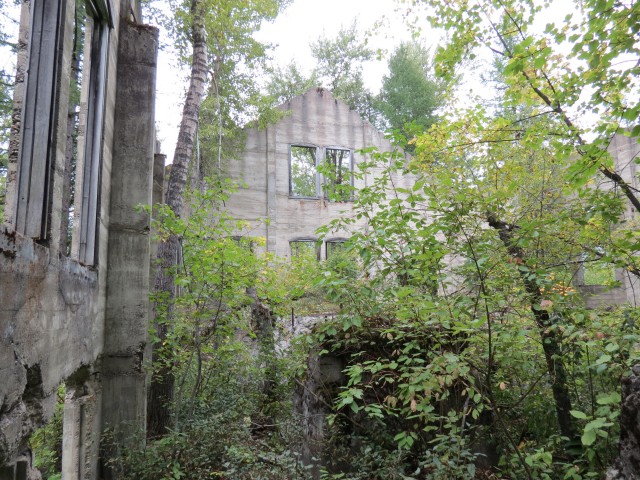
All the buildings were so overgrown making photography a challenge.
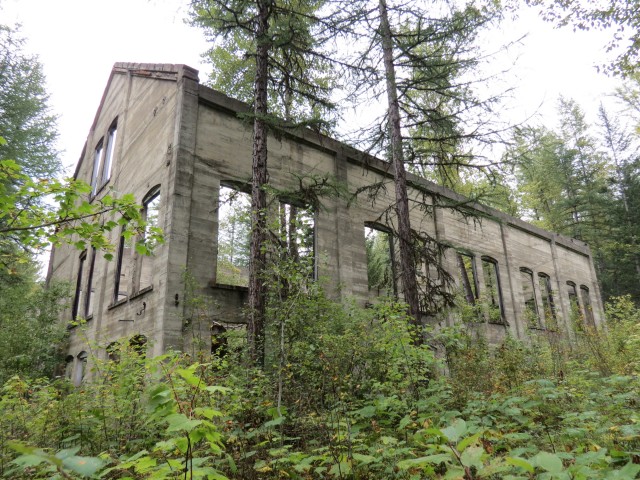
The grey sky adds a sombre feel to the images.
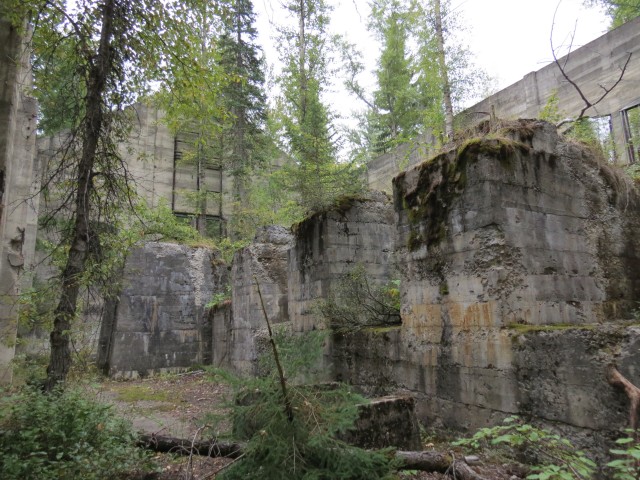
These pedestals would have supported some massive machinery.
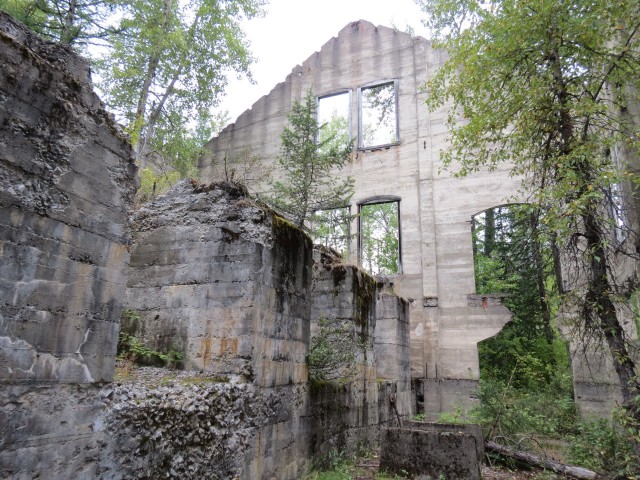
The mine only operated for a half dozen years.
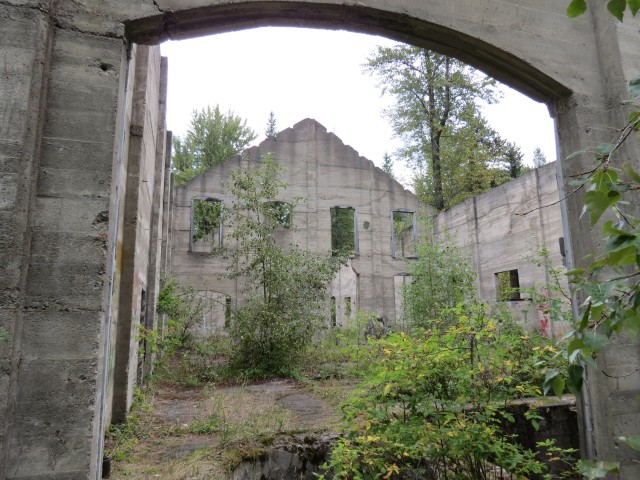
There has been talk of making these buildings a protected historic site.
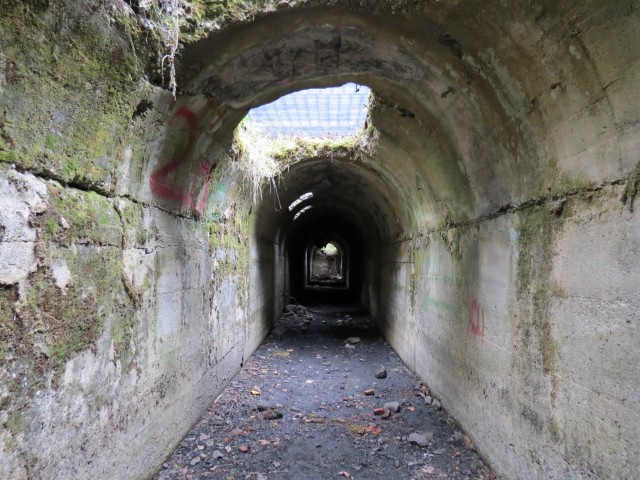
The tunnel mentioned earlier running under the first building.
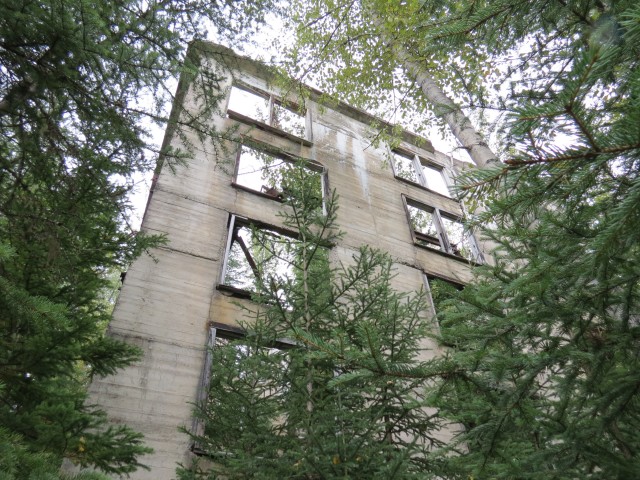
A third structure, this one is few hundred metres north east of the others.
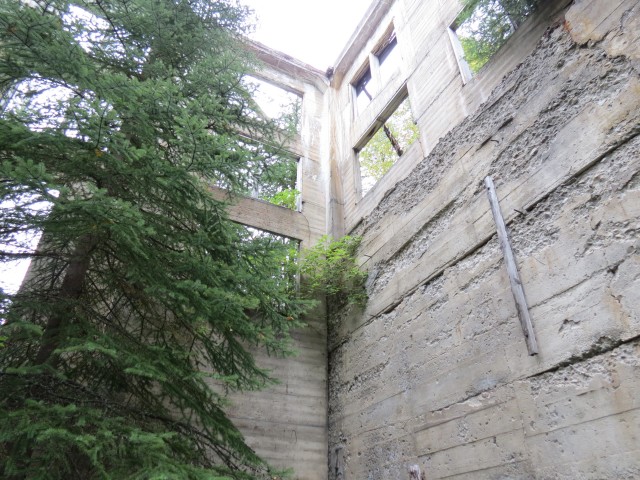
I have not been able to find what this building’s purpose was.
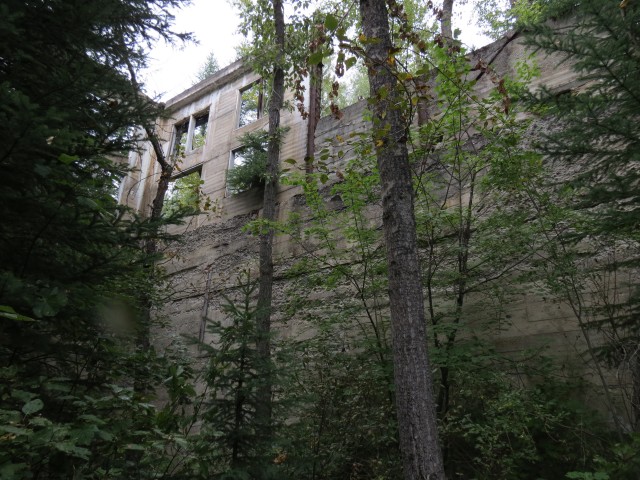
It’s several stories tall.
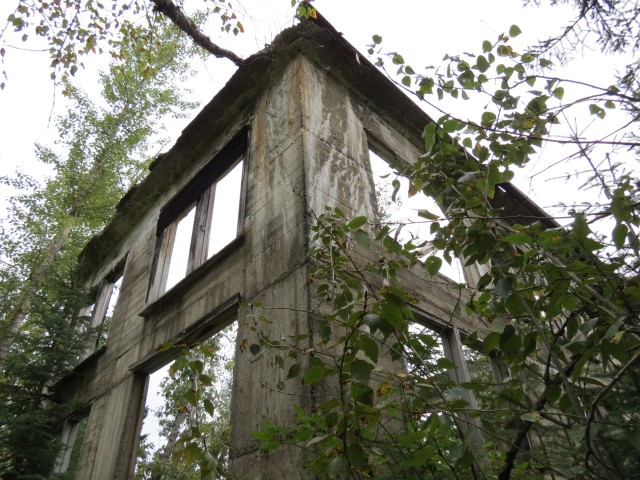
All the buildings we explored were certainly of very substantial construction.
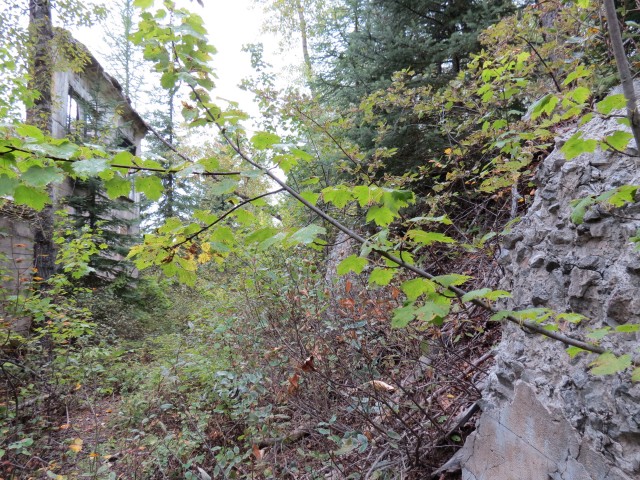
I’m standing on what looks to be an old rail bed.
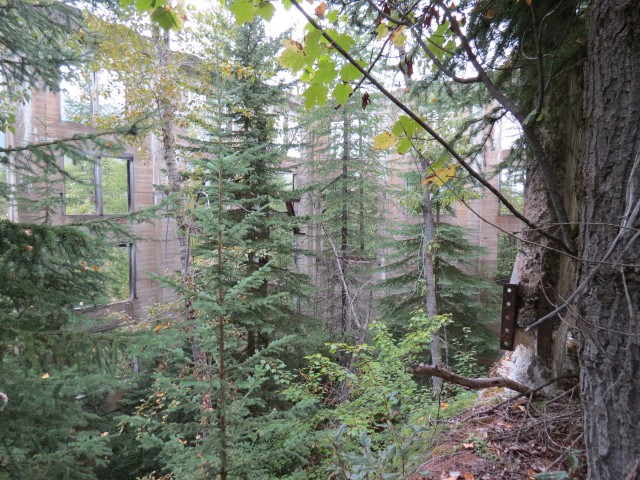
This operation closed down in 1914.
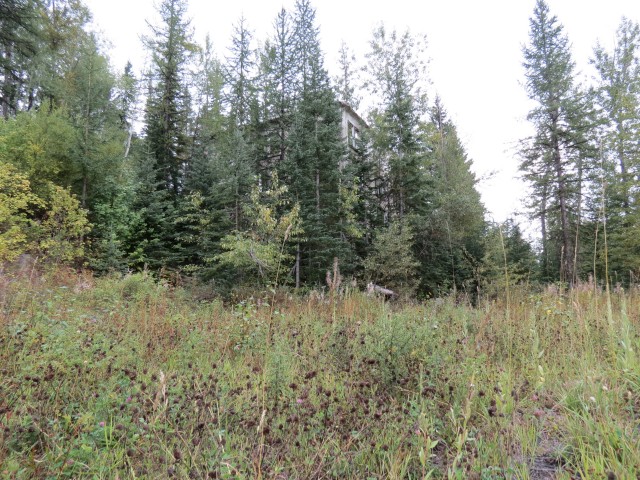
It’s almost totally hidden in the trees.
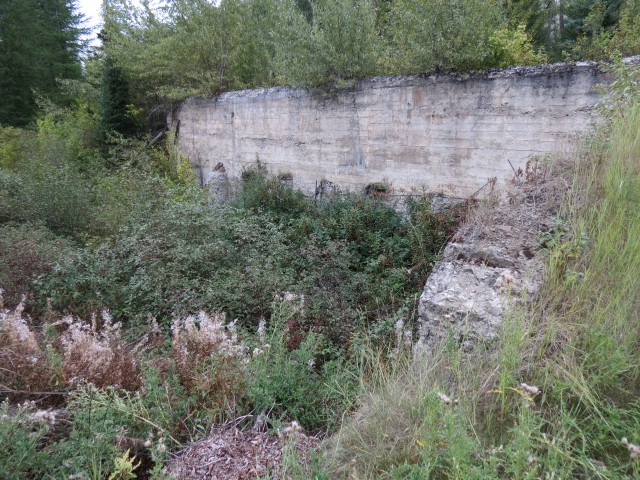
A foundation near the road.
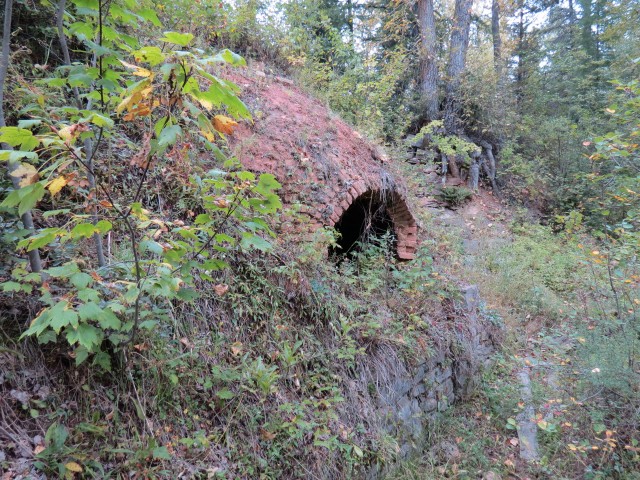
Further east, we come across the coke ovens.
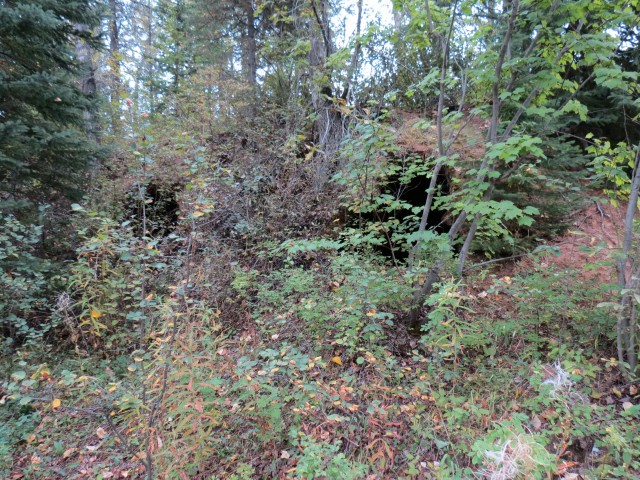
Some parts are completely overgrown.
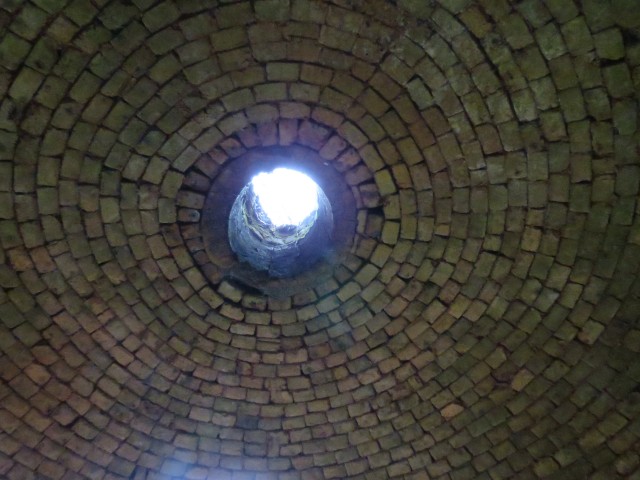
The brickwork is amazing. Coal would enter via that hole.
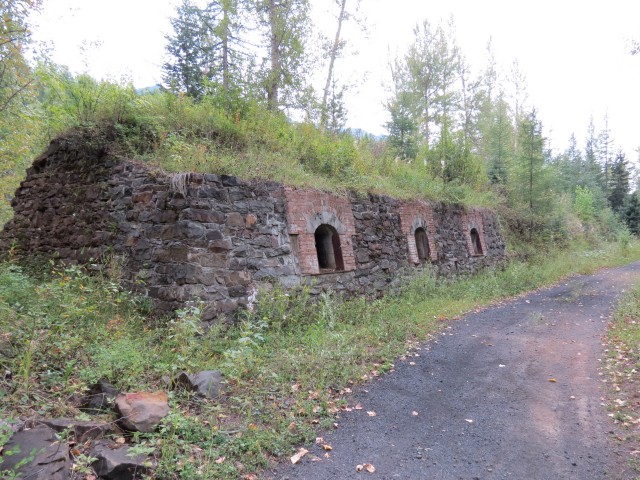
Some sections, like this one, are in better shape than others.
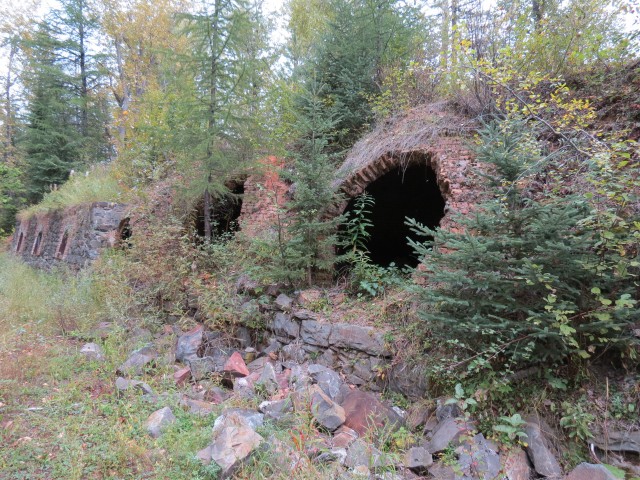
Records state that there were/are 240 ovens here.
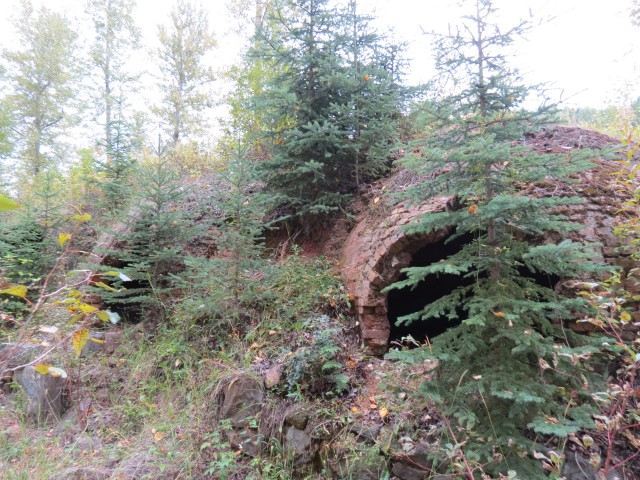
The coke made here would be used in smelters.
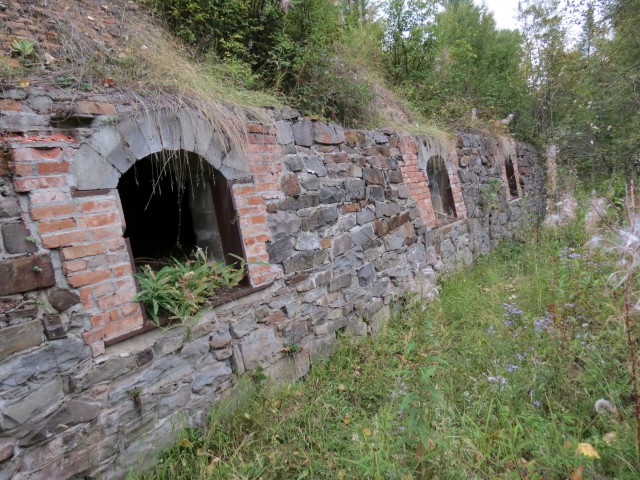
During the process these doors would be sealed with bricks.

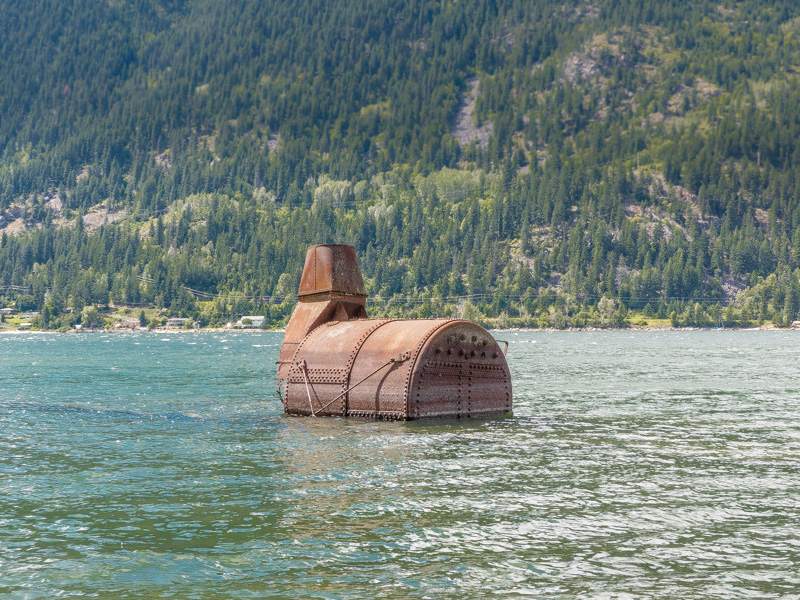
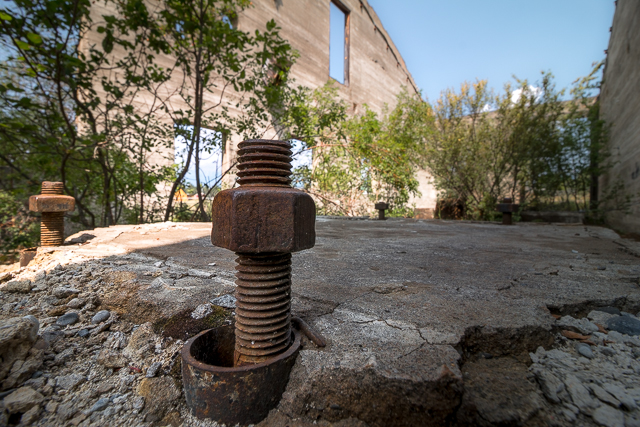
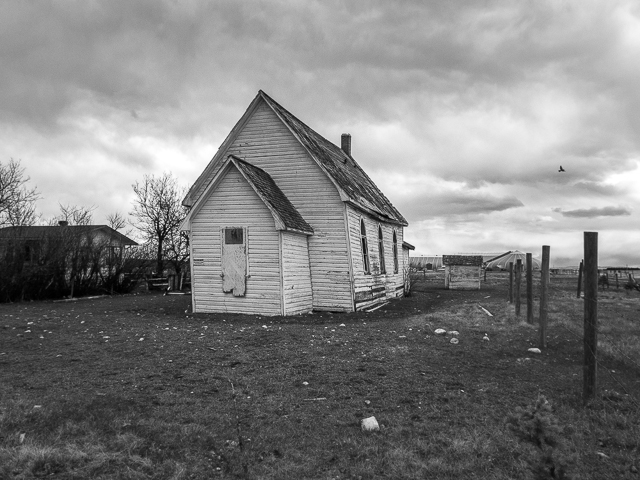
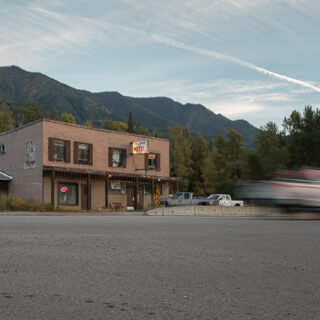
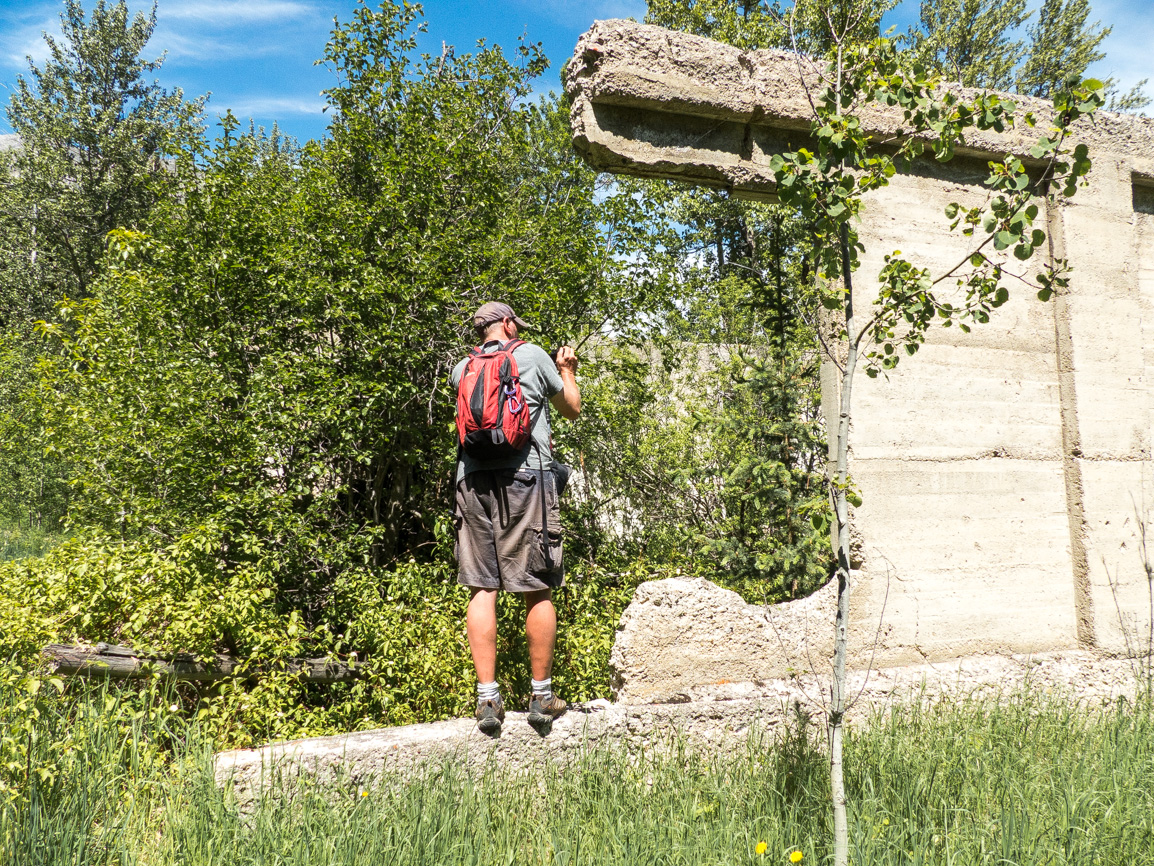
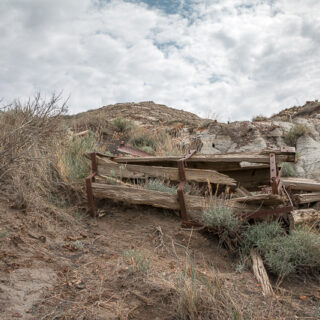
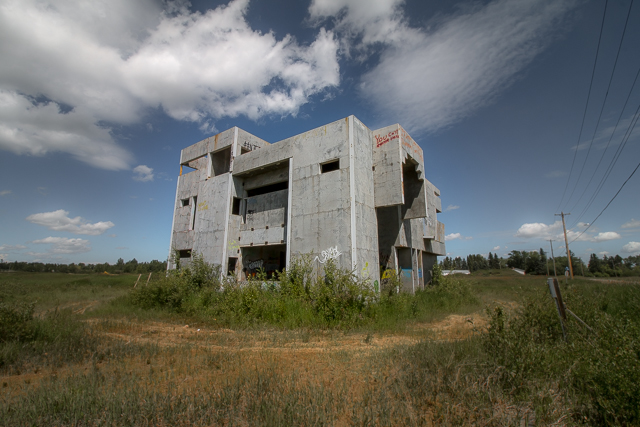
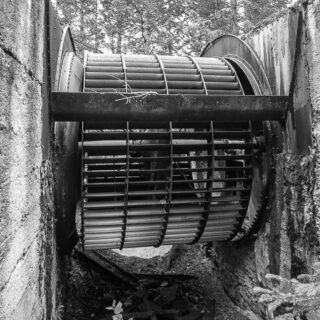
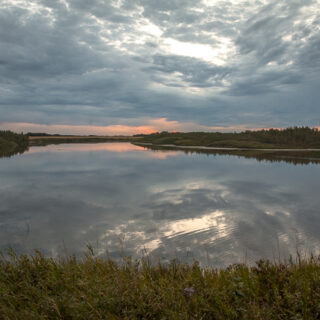
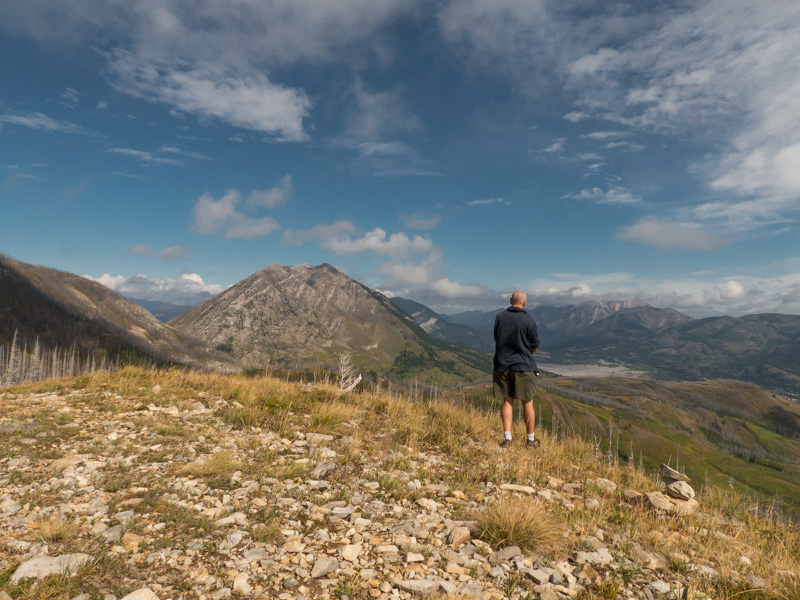
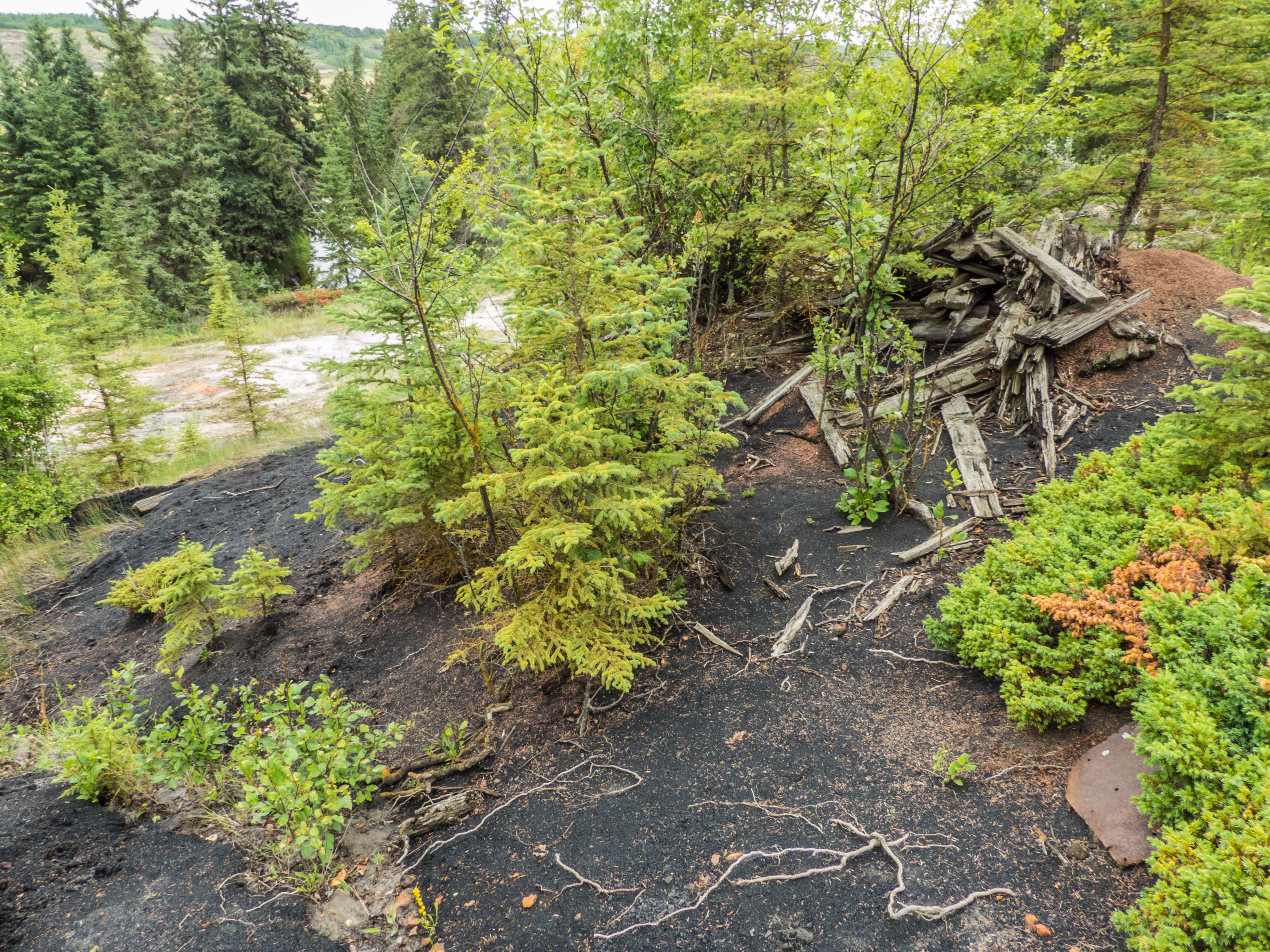
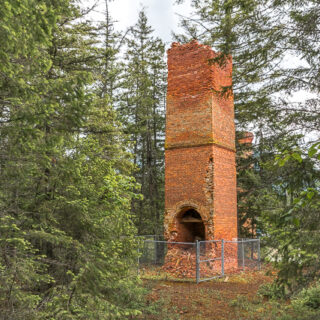
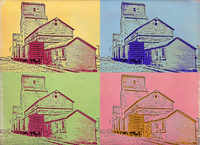






I have two sketches of the mines by S. Lightfoot from 1980. Looking for more info
If you let us all know what you’re looking for specifically perhaps someone here, or maybe readers could help.
The building that is away from the other ones was a hospital
(Sorry for the delay in approving – we’re just recovering from a huge comment’s system crash.)
Interesting – may I ask where you got that information? Given the size of the community at its peak, it sure is a big one.
I lived in the Hosmer (Walt-Else) trailer court in the early ’70s pushing crew wireing houses in Sparwood. Wetramped all over that claim And others. Was interesting for a flatlander from Saskatchewan. Thanks for the well done artacles and pictures. I’ve been to a lot of the same places in B C and alberta. Keep up the good work.
A trailer park boy? I was one too. They sure were interesting places to live. Would love to explore the mine area more. For sure, there’s a lot out there I know we missed. Thanks for commenting and drop by often.
Looks like a great place to explore…
It is!
Shared with Ghost Town Hunters.
Thanks for doing that!
I read this post with great interest. My grandfather was a coal miner in Belgium and worked for a time at this mine after he moved to Canada. He quit that job once he married my grandmother and together they moved to the Stettler area to farm. Take care, you’re blog is very good.
Wow, it’s so neat you have a connection to the mine!
This is an amazing place. Great pictures!
It’s not just amazing, it’s unbelievable!
It’s not just amazing, it’s unbelievable!
Awesome, played in the ovens and old buildings when we were kids.
Cool, I bet you had fun!
Such a cool story, you guys keep up the good work!
We love sharing these adventures!
Very interesting!
Awesome! Cools pics: Definitely spooky, but beautiful.
Thanks!
Very cool. I wonder how they made the ovens roof. Looks like quite the feat of engineering.
Perhaps they made a temporary support form to keep the bricks from falling in until the whole dome was completed? Just a guess.
Awesome work!
Thanks, coming for you guys is a real compliment.